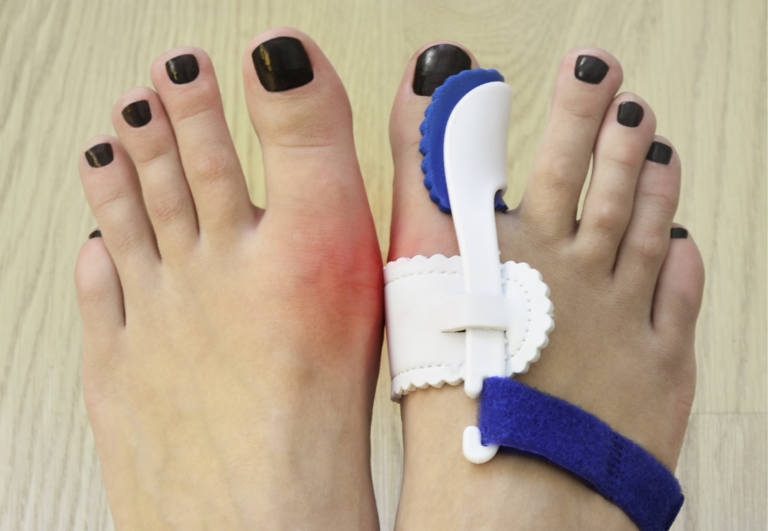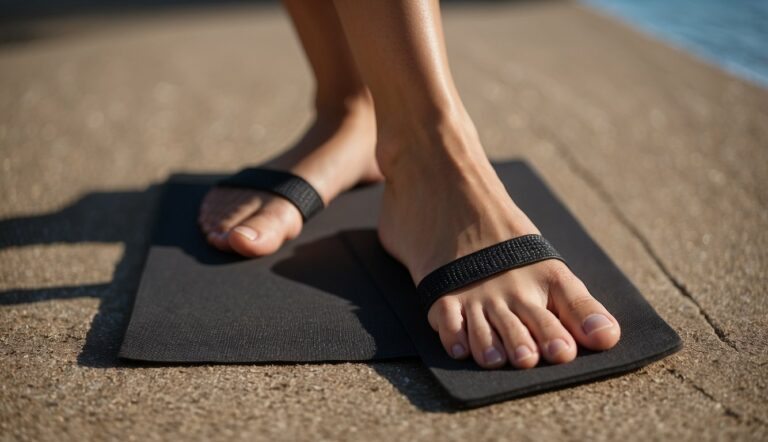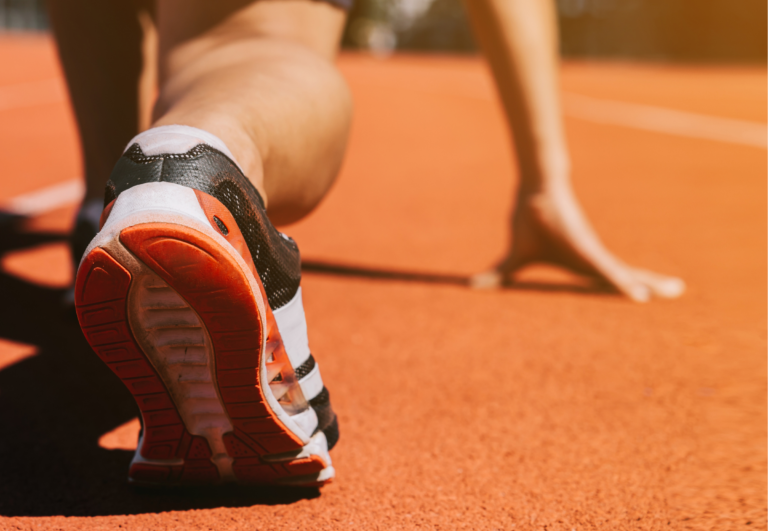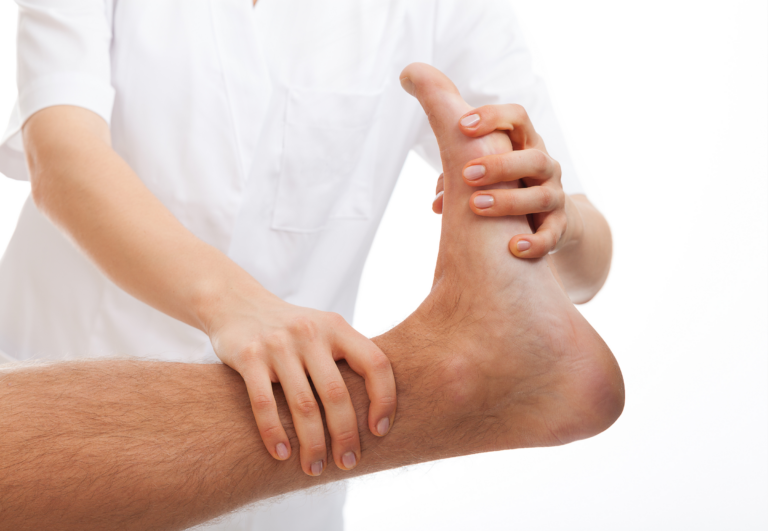Podiatrist Recommended Toe Exercises: Enhance Mobility & Reduce Pain
As someone well-versed in foot care and toe spacers, I understand the importance of keeping our toes in good shape. Our feet are subjected to constant use throughout the day, and the health of our toes plays a crucial role in our overall foot health and comfort. A podiatrist often recommends toe exercises to improve strength and flexibility, which may help alleviate foot pain and prevent future issues. Engaging in daily toe exercises can contribute to better foot function and could potentially reduce the risk of injuries.
Simple exercises, like toe lifts and curls, can be done from the comfort of home with no special equipment. By lifting your toes while keeping your feet flat on the ground, or grabbing marbles or a towel with your toes, you can enhance the muscles in your feet. These exercises aim at not only strengthening the smaller muscles of the toes but also at improving the range of motion and flexibility, which is vital for maintaining balance and proper gait. It’s easy to overlook the significance of toe strength, but it’s a critical component for active and pain-free movement.
Podiatrist Recommended Toe Exercises
Podiatrists often recommend exercises that can help with various foot issues, including improving toe flexibility, strength, and overall foot function. Here are some exercises that podiatrists may suggest:
- Toe Raises, Point, and Curl: Sit with your feet flat on the floor. Raise your heels while keeping your toes on the ground, then point your toes forward, and finally curl your toes inward. This sequence helps strengthen different parts of your feet and toes (Medical News Today).
- Toe Splay: Sit or stand with your feet flat. Spread your toes apart as much as possible, hold the position, and then relax. This exercise helps improve control over the toe muscles (The Podiatry Group of South Texas).
- Marble Pickup: Place a handful of marbles on the floor. Use your toes to pick up one marble at a time and transfer it into a bowl. This helps increase toe dexterity and strength.
- Big Toe Stretch: While seated, cross one leg over the other and pull your big toe gently back towards you. This stretch can help with flexibility and relieve tension in the toe.
- Toe Curls: Place a small towel on the floor and use your toes to scrunch it towards you, then push it away. This strengthens the muscles on the underside of your feet and toes.
- Toe Extension: Place a thick rubber band around all your toes. Spread your toes apart against the resistance of the band, hold for a few seconds, and then relax. This helps strengthen the muscles that spread your toes.
- Toe Tapping: While seated with your feet flat on the floor, lift your toes up and then tap them down one at a time, starting with the big toe and working down to the little toe. This can improve toe flexibility and muscle control.
Always start with a few repetitions of each exercise and gradually increase as your strength and flexibility improve. If you have any specific foot conditions or pain, consult with a podiatrist for personalized advice and exercises tailored to your needs.
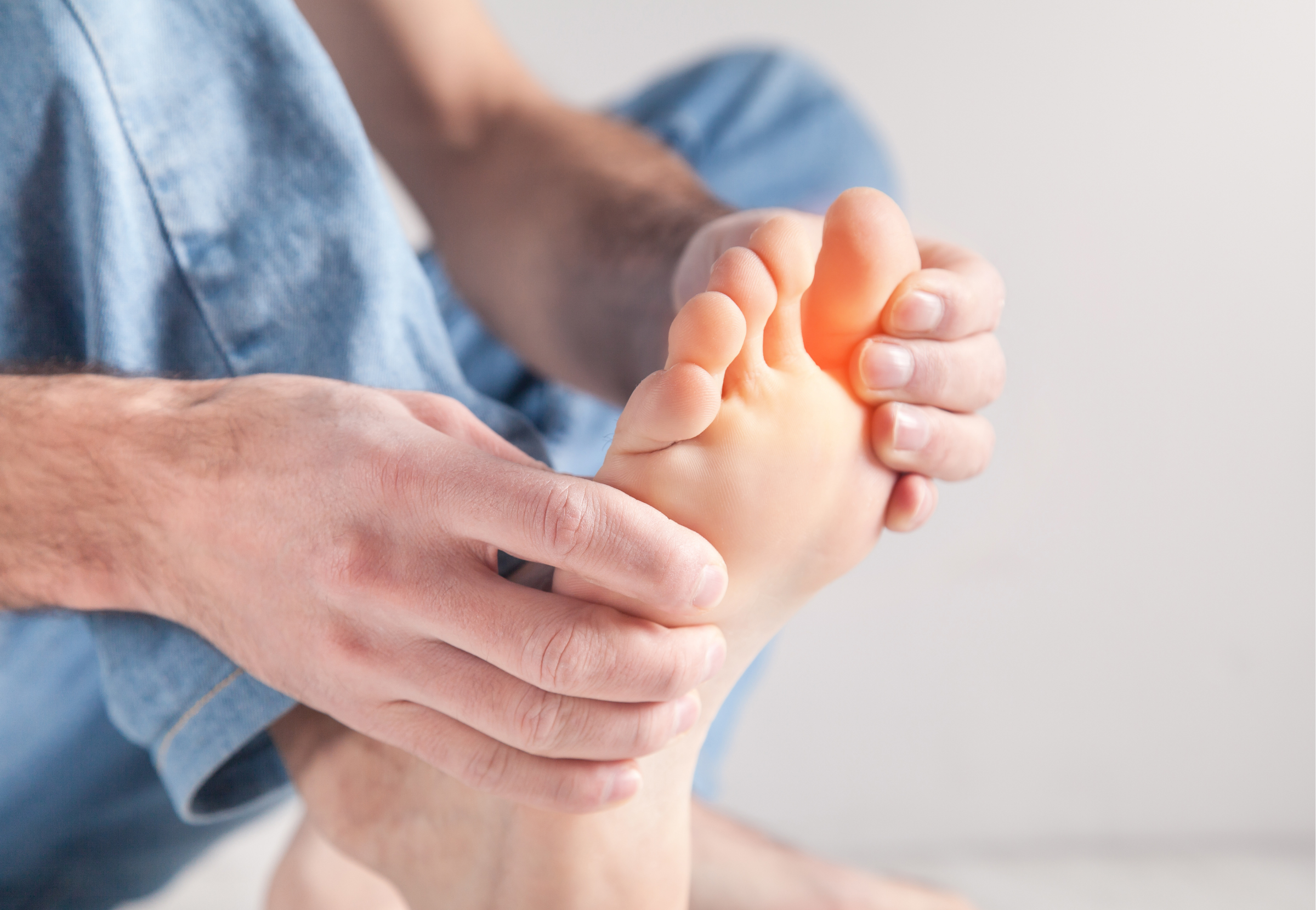
Toe Anatomy and Common Issues
As a toe spacer expert, I’m here to guide you through the basic structure of your toes and some of the common conditions that can affect them.
Toe and Foot Structure
The toes are vital for balance and movement, comprised of bones, joints, muscles, and tendons. Each toe has three bones called phalanges, except for the big toe, which has two. These bones connect to the rest of the foot via joints, allowing for flexibility and movement. The health of these structures is integral in preventing and managing foot pain.
- Bones: 14 phalanges in toes, 5 metatarsal bones in midfoot
- Joints: Flexible points where bones meet, crucial for toe movement
- Muscles and Tendons: Work together to control toe movement
Common Toe Conditions
Several conditions can affect the toes, often causing pain and discomfort. Bunions are bony bumps that form at the joint at the base of the big toe, while hammertoe refers to an abnormal bend in the middle joint of the toe. Arthritis can cause joint inflammation and tenderness. Symptoms of toe issues include pain, restricted movement, and sometimes swelling.
- Bunions: Bony protrusion on the side of the big toe
- Hammertoe: Abnormal toe bending, often requiring toe spacers or surgery
- Arthritis: Joint inflammation, can lead to pain and stiffness in toes
The Benefits of Toe Exercises
Toe exercises enhance foot health significantly. Regularly engaging in these exercises can help maintain mobility, alleviate pain, and prevent future injuries.
Improving Mobility and Flexibility
Improved mobility and flexibility in the toes are crucial for comfortable and fluid movement. I find that exercises like toe lifts, where you sit with your feet flat and lift your toes, enhance the flexibility of the toe muscles. Consistent practice increases the range of motion, which in turn supports overall balance.
Pain Relief and Injury Prevention
By engaging in exercises for your toes, you can reduce the occurrence of foot-related discomfort. Quite often, I see that strengthening the muscles around the toes and feet with exercises such as toe curls can help prevent injuries. The support these exercises provide often leads to better pain management and lessened risk of strain.
Podiatrist-Recommended Toe Exercises
Incorporating toe exercises into your routine can lead to stronger, more flexible toes, aiding in balance and mobility.
Toe Strengthening Exercises
Toe Raise, Point, and Curl: This three-part exercise ensures that you target the different muscles in your toes.
- Toe Raise: Sit with your feet flat on the ground and lift your heels high, keeping toes on the floor. Hold for a few seconds, then lower.
- Toe Point: From the same starting position, raise your heels and roll your toes under so that you’re pointing them. Hold for a few seconds, then release.
- Toe Curl: Lift your heels when sitting and curl your toes downward. Hold for a few seconds, then release.
Repeat these steps 10 times each and perform them daily for stronger toe muscles.
Stretching and Flexibility Exercises
Toe Splay: This exercise improves control over the toe muscles.
- Sit with your feet on the floor and spread your toes as far apart as possible without straining. Hold the splay for a few seconds and release.
- Perform this activity for about 10 repetitions, 2-3 times a day.
Toe splays can be done in tandem with wearing toe spacers to maintain alignment and further mobility benefits.
Toe Extensions: Ideal for relieving discomfort from bunions or for those stiff from tight shoes.
- Gently pull your toes back toward your ankle to stretch the underfoot and toes. You can use your fingers or a strap to aid in the stretch.
- Hold each stretch for 30 seconds and repeat 3-4 times on each foot.
Balance and Coordination Exercises
Balance and coordination are vital for functional foot health.
Marble Pickup:
- Place a few marbles on the ground and pick them up one by one with your toes, dropping them into a bowl.
- Aim for 10 marbles with each foot, and progress by adding more marbles as your coordination improves.
Towel Gather:
- Lay a small towel flat on the ground and use your toes to scrunch and pull the towel towards you.
- Keep repeating until the towel is completely gathered under your foot. Flatten and repeat 2-3 times.
Remember, while toe exercises are beneficial, individuals with specific foot conditions should consult a podiatrist before beginning any new exercise program to ensure suitability and safety.
Integrating Toe Exercises into Your Routine
Integrating specific toe exercises into your daily routine can be pivotal for foot health, particularly if you experience heel or ankle pain. Let’s explore how to incorporate these exercises into your daily life effectively.
Daily Exercise Tips
To ensure the lasting health of your toes, setting aside time for regular exercise is essential. I recommend dedicating 10-15 minutes each day to toe-specific workouts. This can include:
- Toe taps: While seated, tap each toe on the ground, improving coordination in your foot muscles.
- Heel raises: Stand flat on the ground and slowly lift your heels, keeping your toes on the floor. This exercise can help strengthen the muscles around the ankle and alleviate heel pain.
Always start with a 5-minute warm-up consisting of gentle foot movements and stretches to prepare your toes for the exercise. Remember to wear comfortable, low-heeled shoes with good cushioning to support your feet during your routine.
Incorporating Exercises in Daily Activities
Making toe exercises a part of your daily activities can be seamless with a few strategic practices:
- While brushing your teeth: Stand on one foot and perform toe curls to enhance balance and muscle activation.
- During office hours: Take short breaks to stretch your toes and feet. Simple toe extensions and curling can combat stiffness from prolonged sitting.
Use these moments to not just move your toes, but also to evaluate if your current footwear is supportive and spacious enough to allow for healthy toe movement. If you’re often in shoes that restrict your toes, consider integrating toe spacers throughout your day to promote better alignment and reduce pain.
It’s crucial to include periods of rest in your exercise routine. Allowing your feet to recover is as important as the exercises themselves. If you feel discomfort, decrease the intensity or frequency of your exercises.
Professional Care and When to Seek Help
When it comes to toe exercises, it’s essential to know when simple routines are not enough and professional care is needed. A podiatrist can diagnose and treat severe conditions that may not improve with exercises alone.
Identifying Severe Conditions
I’ve learned through my experience that not all foot conditions can be managed with toe spacers or exercises. If you’re experiencing persistent pain, deformities like bunions, or symptoms such as numbness, these may signal a more serious issue requiring a podiatrist’s attention. The American Podiatric Medical Association suggests that quick intervention is crucial, especially for diabetes-related foot issues or acute injuries.
Treatment Options Beyond Exercises
For conditions that toe exercises can’t alleviate, podiatrists may offer a range of treatments. These include:
- Orthotics: Custom devices designed to address foot imbalance and pain.
- Physical Therapy: Targeted protocols to strengthen the foot and ankle, often under the guidance of a rheumatology specialist.
- Surgery: Involving procedures to correct structural foot conditions, typically recommended by a foot expert when conservative treatments are ineffective.
Podiatrists in South Texas, and across the nation, are trained to perform these treatments and are critical in guiding patients along the path to recovery from injury or managing chronic conditions.

